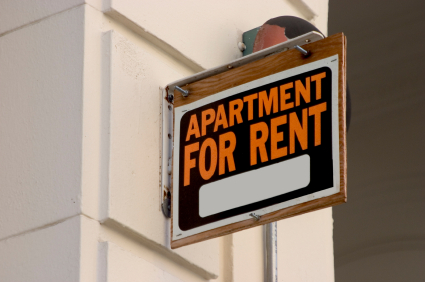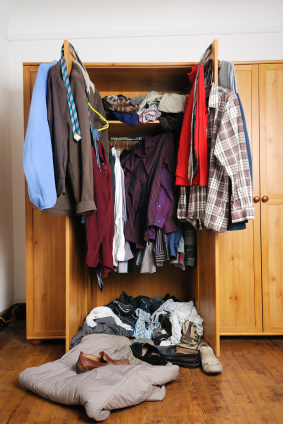Archive for July, 2011

Learn more about how to deduct some expenses from your home office.
By Relocation.com
If you have a home office, you may be wondering if you can take the home office deductions from your income tax. If you are self-employed and you use some of your home as your office or primary work area, then you probably can take the deductions. It can be tricky to figure some of this out, but it is worth the time.
Does your space qualify as a home office?
The IRS uses two terms that determine whether or not a space is truly a home office or not: exclusively and regularly. ‘Exclusively’ means that some part of your home is used ONLY for your business. For instance, if you have set up space in your garage for your office but you are still using part of that garage for storage of winter clothes or toys, then it is not being used exclusively for your office. Thus, you can’t say your garage is your home office. The kitchen table doesn’t qualify either. But if you have cleaned out a bedroom and made it your office, then it would qualify.
‘Regularly’ means that you are using your office space on a regular basis. You can’t take the deduction if you only work there a couple of weeks a year, for example. You must have used this space on a consistent basis. If you use that space for, say, six months out of every year, then you can only calculate the deduction for one half of that year.
One exception is if you use part of your home to store inventory. You can take the deduction even if you used that space for some personal use when your inventory ran low.
What percentage of your home are you using?
In order to take the deduction, you have to determine just how much of your home is dedicated to your home office. This can be done in one of two ways. First, if you are using a bedroom in your home, and your home has six rooms, then you are using 1/6th or 16 percent of your home for your office. The other way is based on square footage. If your home is a 2,000 square foot home and your office is 200 square feet of that area, then you are using 10 percent.
What deductions can I take?
If you can qualify for the home office deductions, then you can take many deductions. Some are:
• Direct expenses: money you spend to maintain or repair the office area.
• Indirect expenses: Whatever percentage of your home is your office, you can take that percentage off things like your mortgage or rent, utilities and insurance.
• Interest and property taxes can be deducted by the percentage of your office area
• Depreciation: This can all be tricky, and if you don’t want to face an audit from the IRS you may need to have a tax professional figure it all out for you. You need to keep records of everything.

By Relocation.com
When deciding to rent your home or apartment there are numerous questions and a screening process that potential tenants should have. Before you advertise your place you should know exactly what you want in a tenant, and what the rules will be.
Of course you are going to run a credit check and a background check on anyone who fills out your application. But before you even get to that point, there are questions you can ask any potential renter that may help you decide if you even want to get to an application. Get a feel for their answers, such as hesitations or just a gut feeling you may have that they are not being totally honest with you.
• Ask them their full names. If they just want you to call them by their first names, this might indicate they have something to hide.
• Ask them where they work, and if you can contact their employer. Obviously you want tenants that are employed, and if they are not willing to let you talk to their boss, maybe they don’t have one.
• How many people will be living in the apartment or house? Are there children and if so, how old are they? You don’t want a family of eight moving into your one bedroom apartment.
• Do they smoke? If they do, will they be smoking outside? Smoke can really mess up the walls and any furnishings you might have.
• Why are they moving? Does their answer sound reasonable?
• Explain that you will need to contact their landlord. If they have a bunch of excuses why that is not a good idea, that will be a huge red flag.
• Do they have any pets, and if so, what are they? If you have a no pet policy, this should be explained upfront.
• Ask for their social security number. They should have no trouble providing it.
You will probably want to think of some other questions on your own that pertain to issues you may have. Just remember that there are certain things you can’t ask. Be sure and check out the laws for the Fair Housing Act. The more information you can get upfront, the more time you will save screening out people who are just not right for your rental property.

Consider these storage solutions for your small space.
By Stephen Davis
Special to Relocation.com
When your space is limited in your new apartment or dorm room, you may end up wondering just where to put stuff so that you don’t end up with tons of clutter. Luckily, there are some pretty and creative ways to store things. It just takes some time and imagination.
The first thing you can do is to evaluate your belongings. If there are items that you really don’t need, get rid of them. You only want to store the things you really need and want and all the rest is just useless clutter.
Think vertically. Once you have cleaned out the useless stuff, it is time to take a look around at just where you can be creative. One thing you can do is to think vertically. Try a bookcase that reaches the ceiling, for instance. You can display a lot on a floor to ceiling bookcase; everything from books to photo albums, magazines and knick-knacks can be put on those shelves. Consider a tall bookcase as a headboard for your bed.
Use the inside of closet and cabinet doors. You can buy plastic hanging shoe-holders, for instance, and put a ton of stuff into them. In the kitchen you can even store small containers, utensils or spices in them. In the bathroom you can roll up towels and put into those pockets, or spare toiletries. For the bathroom, a small wine rack can hold a lot of towels and washcloths as well.
Use storage underneath. Another space you can utilize is under the coffee table or end tables. Get nice looking containers that will fit under these, or try using steamer trunks. You can even use trunks as your coffee table! Look under things for available space. Under the bed is a perfect place to store things, too. You can buy some boxes especially made for under a bed. In a child’s room, consider getting a captain’s bed that has drawers built into it.
Use hooks. In the kitchen, consider the use of hooks on the wall to hang pots and pans, strainers, utensils or whatever. Creatively arranged hooks can really look nice, and it will give you tons of storage. A pot holder that hangs from the ceiling is also a great space saver. Store food items like rice, cereal and the like in stacking plastic containers that take up a lot less room than the boxes the food comes in.
Consider items that double as storage. For instance, a foot stool or ottoman that has storage inside of it will be a great place to store things in. Using a small chest of drawers in the entryway can hold all your items like keys, umbrellas and things like that. You can even use a short chest of drawers as a coffee table! Install shelves high up on the walls of rooms to hold things.
Even the smallest of spaces can be maximized for storage. All you really need to think outside of the box and use some handy storage solutions (and your space) effectively.
Don’t forget to like us on Facebook and follow us on Twitter!
• Follow us on Twitter @Relocation_News
• Become a fan of Relocation.com on Facebook

Explore your new city or town by having a staycation.
By Relocation.com
No matter how much planning and organization one puts into moving, the inevitable turmoil and disruption is exhausting and draining for everyone; and, even when the movers have left, you will still be faced with the turmoil of unpacking, finding a space for everything in unfamiliar territory and disposing or recycling all the packing materials.
The best way to recover from moving is to have a staycation. An amalgamation of ‘stay at home’ and ‘vacation,’ a staycation is – a vacation while staying at home. It is probably also one of the only times when you and your family will enjoy staying at home instead of traveling.
Here are some of our ideas to have the best staycation this summer:
1. Go out and explore your new neighborhood. Check out the local shops, parks, and grocery stores. You can take a bike tour or walk through your new city or town. You will be amazed at what your new area has to offer.
2. Try a new restaurant and chat to strangers. Trying new food is a great way to learn more about the local cuisine. When you are out, meet and talk with people. This is a great way to make friends and learn more about your area.
3. Take a mini-getaway a few hours away but still stay at home. This is a great way to explore local amenities as well as save money on hotel fees.
4. Check out local carnivals. The summer is a great time for local carnivals and fairs. Spend a day with your family exploring exciting thrill rides, local fare and exploring prizes.
5. Indulge. Vacations are all about taking a break and indulging. Consider your staycation to also be about indulging by having a spa day. Have a massage, manicure and/or pedicure or a luxurious rest in a sauna.
Don’t forget to like us on Facebook and follow us on Twitter!
• Follow us on Twitter @Relocation_News
• Become a fan of Relocation.com on Facebook